Suspension Span
The eastern segment connecting the Wards Island viaduct with Astoria, Queens was envisioned by original designer Arthur I. Perry as a dual-deck, 16-lane roadway supported by four suspension cables. When Amman came on board, he scaled back the design to a single eight-lane, truss-stiffened deck with two 3,104-foot long suspension cables hanging from two 315-foot-tall, 5,500-ton steel towers. Amman's modifications permitted use of foundations that had been constructed in the initial phase of construction while shaving $10 million off the budget.
The 1,380-foot main span hangs 135-feet over mean high water. The two 20-inch diameter cables each contain 37 strands, with each strand composed of 248 galvanized steel wires around 1/5th of an inch thick. The structure is unique in that the cables bend an unusually high 45 degrees at the anchorage bent posts, placing more of the load downward on the anchorages than is customary. The 20-foot-deep stiffening trusses surround the roadway on the main deck and obscure motorist views of the river and city, but the pedestrian walkway hangs over the river from the top outer edge of the truss, providing both exceptional views of the river and comforting separation from the traffic whizzing by below.
Lamp posts and other ornamental features (such as the tiered tips of the towers) reflect the Art Deco aesthetic of the 1930s. The four vertical posts between the legs of each tower are ornamental and have no structural purpose. When I visited in 2008, the bridge was undergoing a much needed dehumidification and renovation of the anchorages and a reanchoring of the cable strands.
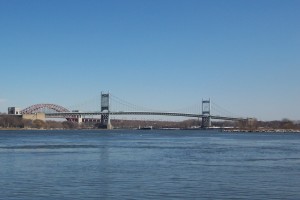
Suspension span view from the South
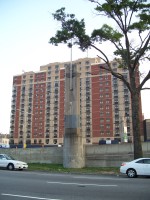
Flagpole on the east approach in Astoria
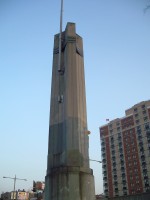
Flagpole on the east approach in Astoria
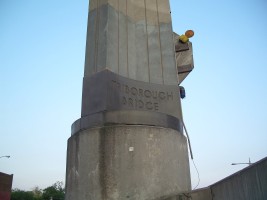
Flagpole on the east approach in Astoria
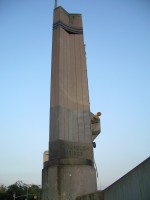
Flagpole on the east approach in Astoria
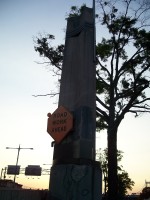
Flagpole on the east approach in Astoria
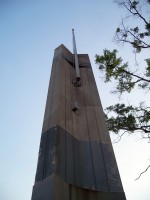
Flagpole on the east approach in Astoria
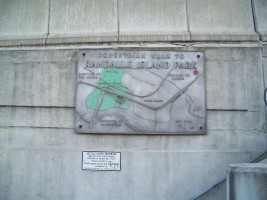
Aluminum bas relief map in Astoria of the Triboro Bridge
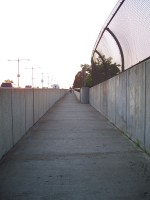
East approach pedistrian walkway to Wards Island

Astoria just north of east approach
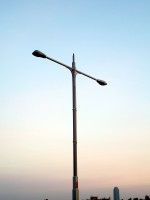
Lamp post on east approach

Temporary walkway hanging of north side of eastern anchorage

Temporary walkway hanging of north side of eastern anchorage
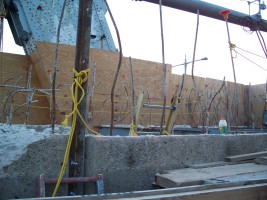
Concrete repair on eastern anchorage
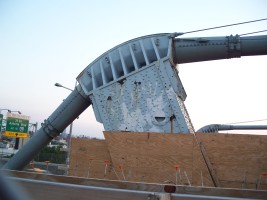
Northeast cable anchorage eyebar
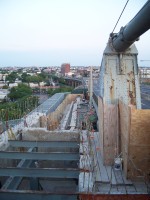
Repair of eastern anchorage
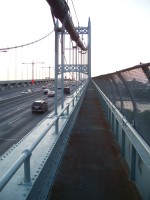
Pedstrian walkway and eastern tower
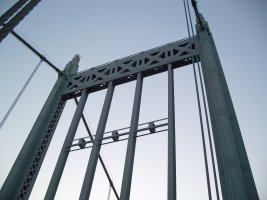
Eastern tower
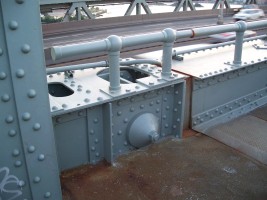
Northeast joint of main span and east pier

Lamp
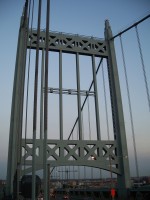
East tower
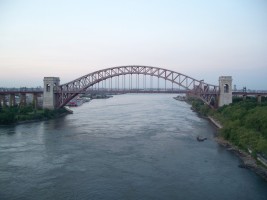
Hell Gate rail bridge viewed from the Triboro Bridge at sunset
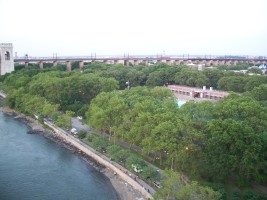
Astoria Park viewed from the Triboro Bridge
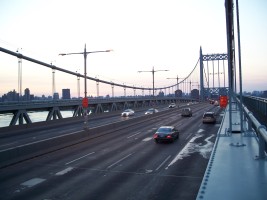
Main span roadway viewed from the east

East tower viewed from the west
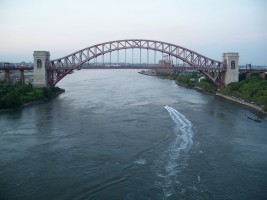
Hell Gate rail bridge

Anemometer on weather station

Ward's Island construction
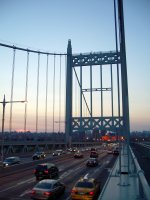
West tower viewed from the east at sunset
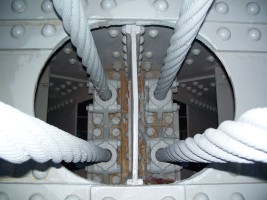
Suspender cable attachment to main span
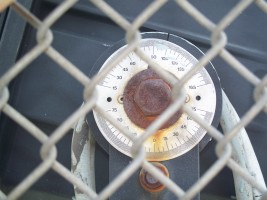
Lighting angle scale

Old unused sign display?
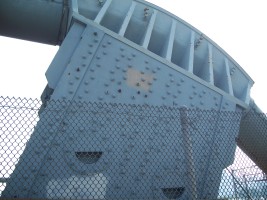
Northwest eyebar
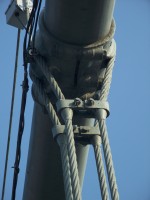
Suspender cable
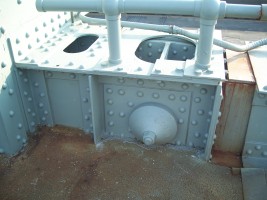
Joint
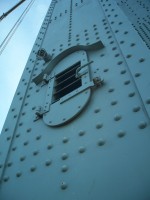
Air duct in tower
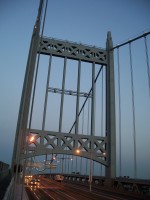
West tower viewed from the west
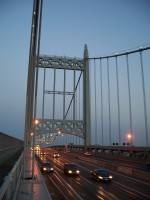
West tower and roadway coming off main span

Pedestrian walkway at west pier - note degraded concrete waiting to be replaced
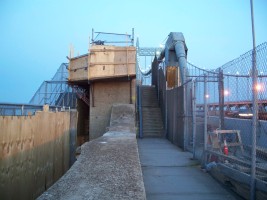
Pedestrian walkway at west pier

Northwest cable

North pedestrian walkway, west tower

Renovated pedestrian walkway down to Wards Island with enclosed cage to prevent jumping or dropping of projectiles
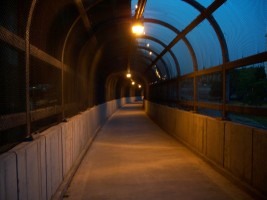
Pedestrian walkway down to Wards Island

Construction equipment under Wards Island viaduct

West approach to the suspension span with walkway down to Wards Island
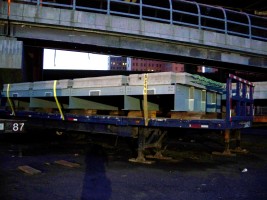
Pre-cast roadbed sections awaiting installation
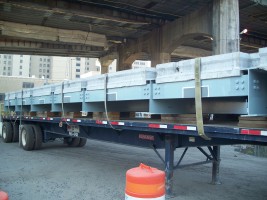
Pre-cast roadbed sections
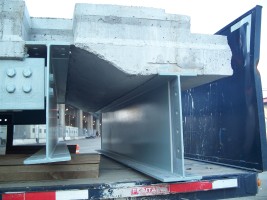
Pre-cast roadbed sections
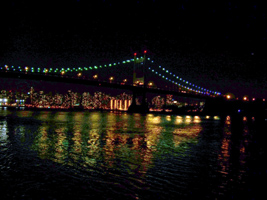
Night view from the Northeast in Astoria Park

East approach by night
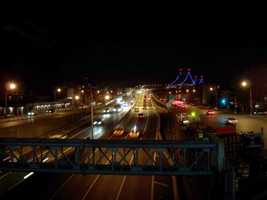
East approach by night